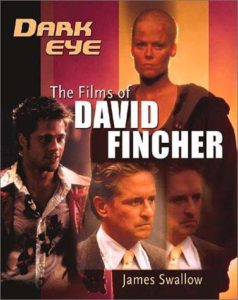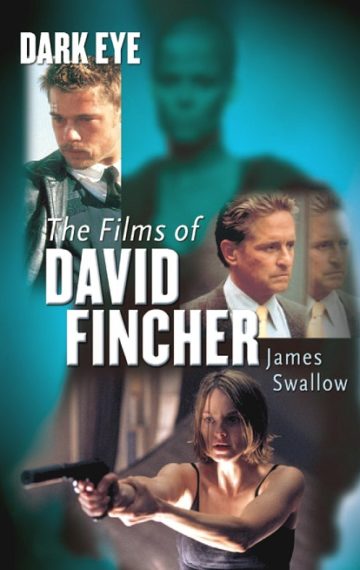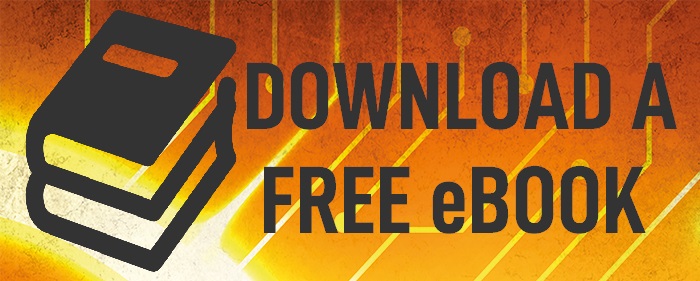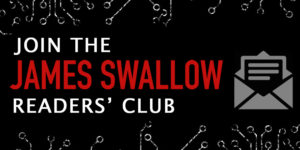The indispensable guide to the work of David Fincher, director of Seven, Fight Club and Panic Room – as recommended by Empire, Total Film, Uncut, Hotdog, Film Review, Library Journal, SFX, The Spinning Image, Sci-Fi-London and The Alien Online.
David Fincher is young, talented, and something of an outsider, with a dark cinematic vision from the serial-killer drama Seven to the urban gothic thriller Panic Room.
In Dark Eye, written with Fincher’s full involvement and featuring in-depth interviews, journalist James Swallow presents a complete survey of the director’s work.
He begins with Fincher’s early career at special-effects house Industrial Light & Magic, where he worked on films like Return of the Jedi and Indiana Jones and the Temple of Doom. He then looks at each of the director’s major films, including his most recent release, Zodiac.
One of the most dynamic and diverse contemporary filmmakers, David Fincher has earned critical praise and cult stardom for his hard-edged and uncompromising movies.
Dark Eye examines each of the director’s films in detail and features behind-the-scenes information, commentary from actors, writers and production staff, plus extensive material from exclusive interviews with Fincher.
One of the most contentious and dynamic filmmakers of recent years, David Fincher has earned critical respect and cult stardom for his challenging, hard-edged and uncompromising movies.
Dark Eye: The Films of David Fincher charts his career and his films from early days at George Lucas’s special effects studio Industrial Light and Magic, to Fincher’s commercials for Nike, Chanel and Coca-Cola, and his outstanding rock videos for acts like The Rolling Stones, Madonna, Sting and Michael Jackson.
Dark Eye examines each of his feature films in detail, with individual chapters covering the controversially downbeat Alien 3, the mould-breaking serial killer thriller Seven, the complex rules of The Game, the dark humour of Fight Club‘s destructive narrative and the locked-box drama of Panic Room.
Featuring reports from behind-the-scenes and commentary from actors, writers and production staff, Dark Eye also includes exclusive interviews with David Fincher, bringing an unparalleled insight into the work of this maverick director.
AUTHOR’S NOTES:
Originally published in 2003, currently out of print (and out of date!)
Excerpt From Dark Eye: The Films of David Fincher “Chapter 2: Dark & Light”
“It was the 1969 feature film Butch Cassidy and the Sundance Kid that crystallised the dream of a career in cinema for the young David Fincher. ‘I saw a documentary on the making of Butch Cassidy and I saw it when I was about eight and a half. It had never occurred to me before then that movies weren’t made in real time, that there was a real job to make a movie. It just seemed to me that if it took place over three days, it took three days to shoot. The documentary that I saw was narrated by the director, George Roy Hill – I think it’s actually on the DVD of the 25th anniversary edition of Butch Cassidy and the Sundance Kid – and it just was kind of amusing as he talked about the different processes. He was talking about this behind the scenes footage and talking about why he chose the people and that they had to shoot stuff in slow motion to make the explosion look bigger, and all these things that I had just never thought about. The documentary talked you through the whole thing, and I was kind of like, “Wow! These are adults building full-scale balsa-wood trains, just to blow them up! How do you get involved in that?” From that point on I was thinking, “That would be a good job.”‘
Hill’s movie still has a strong personal resonance to Fincher over thirty years later. ‘The first movie that I loved, that I thought was for me – not my dad showing me the movies that he loved – the first movie for me was Butch Cassidy, it was the first movie that I could look at and say “this is my experience” – and it’s probably still my favourite all-time movie. I mean, it’s a western, it’s the first buddy movie, but that was the movie; in retrospect you look back on it and go “This has a great cast, a great director, a great screenplay, a great costume designer, a brilliant cinematographer, great sets, great locations” – every single thing, and I remember being so swept away by how everything was working. It’s probably some of Hill’s best moments in that movie, it’s so amazingly well done, and it has action and romance and humour. That was the seminal movie for me, where I went “There can be nothing better than this.” And then, there was The Sting, Jaws, I remember seeing Lawrence of Arabia on television in pan-and-scan, and West Side Story, I loved that movie (too).’ ”
COVER GALLERY




